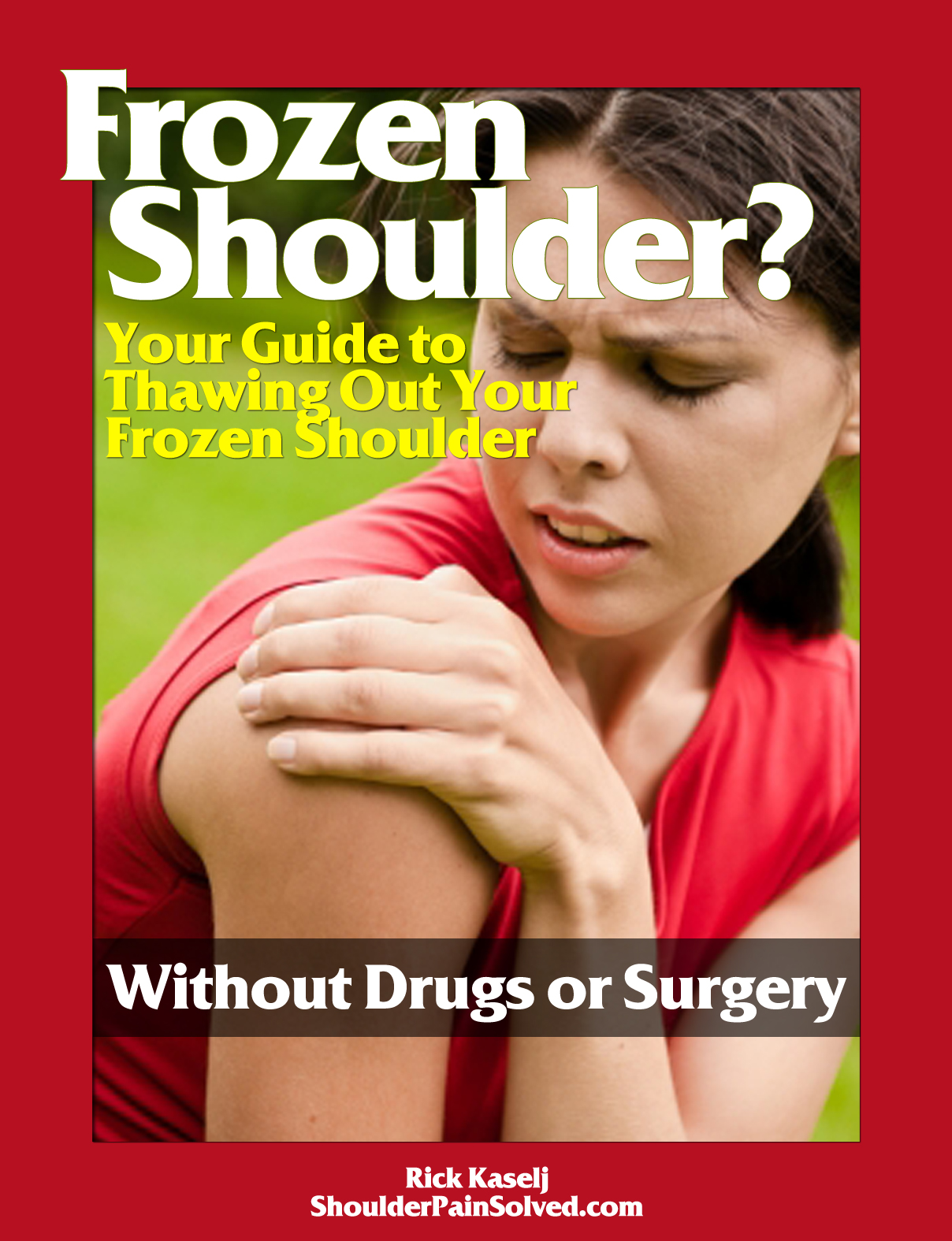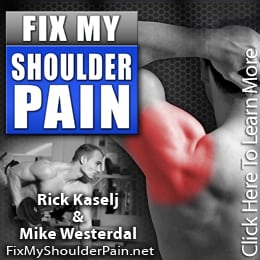What is Frozen Shoulder?
Introduction to Frozen Shoulder
The shoulder joint is one of the most mobile and flexible joints in the human body,however, its wide range of mobility comes with a drawback: the shoulder joint is also one of the most commonly injured joints. It does not discriminate; shoulder pain can happen to you, whether you are an athlete or not. It is estimated that pain in the shoulder is the third most common cause of musculoskeletal disability after neck pain and low back pain.
Shoulder pain can lead to a host of temporary or long-term consequences. One of these is adhesive capsulitis, which is more commonly known as frozen shoulder. Its more common term accurately describes the condition itself. Adhesive capsulitis can cause the shoulder to be extremely stiff, and simple shoulder movements, such as buttoning your shirt, become an impossible task. Frozen shoulder can be a debilitating musculoskeletal condition in the long run. It can have severe effects on your normal routine if the right treatment is not received in a timely manner. Most cases of frozen shoulder typically begin innocently enough, so preventive measures are essential in its treatment and management.
Frozen shoulder is manifested by loss of range of motion of the shoulder secondary to shoulder pain and stiffness. This condition is the result of inflammation, scarring, and eventual shrinkage of the capsule that encloses the shoulder joint. These capsular changes are brought about by any injury to the shoulder. Individuals with diabetes, a history of surgery involving the chest area or breast, or chronic conditions involving the shoulder are susceptible to develop frozen shoulder.
Adhesive capsulitis is mainly managed by conservative modalities, especially during the early stages. One of the most reliable ways to un-freeze a frozen shoulder is through implementation of therapeutic exercises, particularly stretching exercises. Articular stretching exercises have been found to regain and improve the shoulder’s range of motion. Immobility of an injured or painful shoulder joint may eventually lead to frozen shoulder. For this reason, this guide aims to introduce simple shoulder exercises to get your shoulder moving and functioning optimally.
What is a frozen shoulder?
Frozen shoulder syndrome is also known as adhesive capsulitis. The term “frozen shoulder” was originally coined by Codman in 1934 to describe a painful shoulder condition with a gradual or slow onset. Patients with the condition consistently complained of shoulder stiffness and difficulty sleeping on the affected side. Codman noted that patients suspected of frozen shoulder typically demonstrated a significantly decreased ability to lift the arm (shoulder flexion) and rotate the arm out (external rotation of the shoulder). These signs are generally accepted as the hallmarks of frozen shoulder (Dias, Cutts, & Massoud, 2005).
Frozen shoulder was first called “periarthritis” by Duplay in 1872. In 1945, Naviesear coined the term “adhesive capsulitis”. This term is synonymous to frozen shoulder syndrome, but the most recent research revealed that this condition is not, in any way, associated with or related to capsular adhesions (Dias, Cutts, & Massoud, 2005). It was found that frozen shoulder is associated with synovitis, or inflammation of the synovial membrane in the shoulder joint cavity, and capsule contracture (Dias, Cutts, & Massoud, 2005).
Adhesive capsulitis is a musculoskeletal condition of unknown cause (idiopathic) with two main characteristics: shoulder pain and shortening of tissue (Roy, 2012).
- Shoulder Pain: Shoulder pain associated with frozen shoulder has a gradual and progressive onset. During the earliest stages, the pain is more severe at night. The pain is aggravated or elicited when the shoulder joint is moved toward its farthest range of motion. The pain is more evident with combined movements, such as shoulder abduction (away from the midline of the body) and external rotation (rotation away from the body’s center) or shoulder extension (movement to increase angle of the joint) and internal rotation (rotation toward the body’s center). The pain is initially described as constant and may occur only at rest. The intensity of pain is worsened by repeated shoulder movement, stress, and exposure to cold temperatures.
- Shortening of Tissue: The second main characteristic is the shortening of tissue or contracture. What happens is a gradual and increased loss of motion of the affected shoulder joint in all directions. The range of motion is not only limited when the shoulder is actively moved by the patient, but also when an examiner attempts to move the joint fully as the patient relaxes (Shiel, Jr., 2011). Experts and clinicians found that patients with frozen shoulder suffer greater passive loss of external rotation than of shoulder abduction and internal rotation (Roy, 2012).
There is a tendency to diagnose frozen shoulder to patients complaining of stiffness in the shoulder, but this should not be the case. The most recent research reveals that frozen shoulder is a specific musculoskeletal condition that requires a particular management pathway for resolution. It is important that shoulder conditions which cause stiffness in the shoulder area, such as osteoarthritis and rotator cuff tear, arediagnosed properly rather than labelled“frozen shoulder”.
In 1934, Codman described frozen shoulder as a condition that is difficult to define, challenging to treat, and complex to explain (Roy, 2012). In spite of the advancements made in modern medicine, practitioners would still describe frozen shoulder with the same statement. At present, the generally accepted definition of frozen shoulder is the following: a musculoskeletal condition of an unknown cause that is distinguished by significant limitation of active and passive range of motion of the shoulder occurring in the absence of a known shoulder disorder.
How common is frozen shoulder?
Shoulder pain is considered the third leading cause of musculoskeletal disability, right behind low back pain and cervical or neck pain. It is estimated that frozen shoulder affects 2 to 5% of the general population at any given time (Roy, 2012; Pearsall, 2011). Between 10 and 20% of individuals with frozen shoulder have a history of diabetes before the onset of frozen shoulder symptoms.
Although either shoulder can be affected by frozen shoulder syndrome, the condition more commonly occurs in the non-dominant shoulder. For instance, a right-handed person is more likely to have frozen shoulder symptoms involving the left shoulder.
Frozen shoulder may affect one or both shoulders. Those with frozen shoulder in both shoulders may have the condition simultaneously or in succession. Adhesive capsulitis affecting both shoulders is not rare. It is estimated that around 16% of patients diagnosed with frozen shoulder can have the condition in both shoulders. In fact, 14% of this population reports symptoms occurring in the opposite (contralateral) shoulder, as frozen shoulder symptoms are still active in the initially affected shoulder joint. It was found that the contralateral shoulder commonly becomes affected within 5 years of disease onset. Relapse is not a common occurrence. Once frozen shoulder is resolved, a recurrence is not likely to occur in the same joint.
Who is at risk of frozen shoulder?
Frozen shoulder syndrome usually affects individuals aged 40 to 70 years (Pearsall, 2011). Women are more likely to develop the shoulder disease than men. The mean age of onset of symptoms is 52 years for women and 55 years for men. It was once suggested that menopause is a contributing cause of frozen shoulder. The association was ruled out after research investigations failed to find significant occurrence of frozen shoulder in women with early menopause.
Researchers found that adhesive capsulitis is associated with other medical conditions. As previously mentioned, a higher incidence of frozen shoulder occurs in individuals with diabetes. It is estimated that 10 to 20% of patients with frozen shoulder have a history of diabetes during the onset of symptoms. It is more likely to occur in patients diagnosed with type I diabetes or those who are insulin-dependent. Bilateral shoulder involvement is more common in patients who administer insulin on a daily basis. In contrast, frozen shoulder occurs in 2 to 5% of the general population.
Individuals with hyperthyroidism and hypertriglyceridemia are more susceptible to frozen shoulder syndrome. Hyperthyroidism is a condition where the thyroid gland produces too much thyroid hormone. Hypertriglyceridemia involves increased triglyceride levels in the blood circulation; this condition has been associated with cardiovascular disorders.
Rick Kaselj, MS
Hey, here is the Frozen Shoulder Client Guide
You can download it by CLICKING HERE or clicking the below image.
.




